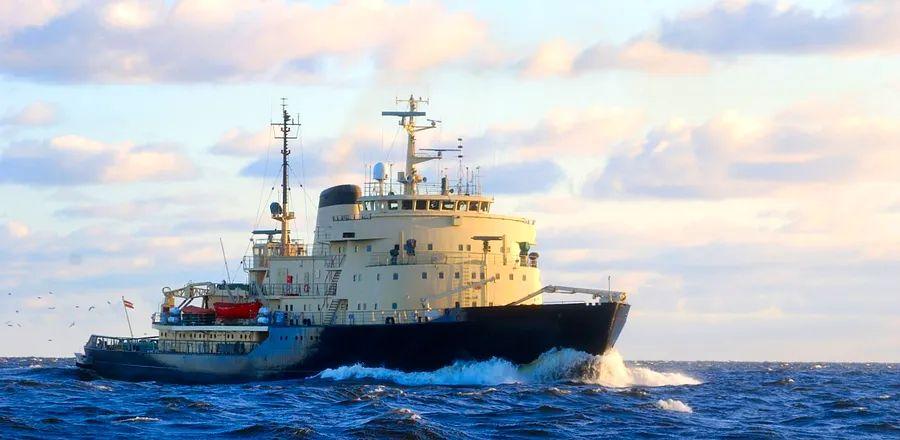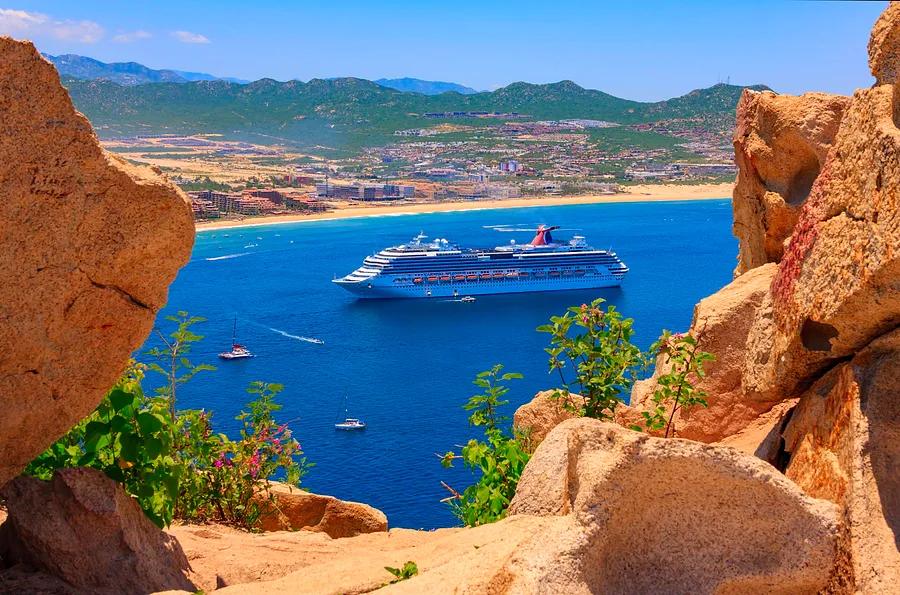Could the Future of Cruising Involve Nuclear Energy?

Is your next cruise going to be on a nuclear-powered vessel? It might be possible, but you may need to wait a decade or more. While this fuel technology may sound futuristic, several industry experts at the Seatrade Cruise Global conference in Miami earlier this month argue that it shouldn't be dismissed just yet.
The International Maritime Organization (IMO), a UN agency overseeing global shipping regulations, aims for the cruise industry to achieve carbon neutrality by 2050. As a result, shipbuilders are exploring options for zero-emission fuels, with nuclear power being one of them.
Nuclear propulsion has been utilized in shipping for decades, though it has mainly been restricted to naval vessels due to its costs and the public's perception that nuclear power isn't entirely safe. In the late 1950s, the U.S. government financed the creation of the NS Savannah, a nuclear-powered vessel designed for both cargo and passengers.
Named after the first steam-powered ship to successfully navigate the Atlantic in 1819, the Savannah faced challenges early in its operation due to labor disputes and negative media coverage regarding minor reactor shutdowns for regular maintenance. The ship struggled to balance passenger and cargo needs, leading to the cessation of passenger services after a few years to cut labor expenses. Additionally, operational costs were higher compared to conventionally powered vessels—primarily due to design issues rather than nuclear factors. Ultimately, the Savannah was taken out of service in 1971 and has served as a museum ship in Baltimore, Maryland, since 2008.
One of the key lessons learned from operating the Savannah regarding nuclear-powered vessels is the paramount importance of safety. The Savannah frequently needed special permits to dock in international ports, and the certification procedures were time-consuming. Even today, countries such as New Zealand maintain outright bans on nuclear-powered ships within their waters.
So, why consider nuclear energy despite these challenges? The potential for significant emissions reductions is a major incentive. Nuclear power generates no greenhouse gas emissions, meaning that substituting a fossil fuel-burning vessel with a nuclear-powered alternative effectively eliminates its carbon footprint.
The mechanics of nuclear power are relatively simple. A small quantity of enriched uranium generates heat, which is then utilized to operate a steam engine that provides propulsion and onboard electricity for the ship. This limited amount of uranium can sustain the ship for decades before it is depleted, allowing for more space that would otherwise be allocated for conventional fuel.
Andrew McKeran, the chief commercial officer at Lloyd’s Register, a maritime consultancy based in the U.K., remarked during the Seatrade panel that the industry's views on carbon emissions have rapidly changed. "Fifteen years ago, we claimed LNG [liquefied natural gas] would never be adopted, and now it’s commonplace." LNG is often considered a cleaner-burning alternative to the crude oil-based fuels that power many modern cruise and cargo vessels, although it remains uncertain if LNG is genuinely cleaner and greener than traditional maritime fuels, given the energy-intensive processes involved in its production.
The industry is also exploring other environmentally friendly technologies, such as hydrogen fuel cells (which generate cleaner energy through chemical reactions), although this technology is still in its early stages and has not yet been developed for large-scale power generation. Consequently, any aspirations for nuclear-powered vessels from shipbuilders or engine manufacturers remain largely theoretical for now.
Tobi Menzies, the business development director at Core Power, a maritime energy firm focused on advancing new nuclear technologies for marine applications, indicated that the industry might not need to wait for the construction of entirely new, fully nuclear-powered vessels.
"I envision nuclear potentially being integrated into the cruise industry through retrofitting existing ships. Cruise vessels have long operational lifespans and routinely undergo refits to modernize passenger facilities. It’s conceivable to think about upgrading the power source to nuclear during one of these regular updates," Menzies explained during the panel discussion.
According to Menzies, these upgrades wouldn’t be as expensive or time-consuming as completely converting ships to nuclear propulsion. "Consider the vessel as having two components—propulsion and the rest of the ship. It’s feasible to retrofit ships with nuclear power solely to meet their onboard electricity requirements," he pointed out. This approach would significantly cut carbon emissions without necessitating the much more complex overhaul of the propulsion fuel system.
William Burke, chief maritime officer at Carnival Corporation—which not only operates Carnival but also manages several of the largest cruise brands in the industry, including Princess Cruises, Holland America Line, Cunard Line, and Seabourn—warned during the discussion that the cruise sector might not be the best environment for nuclear innovations.
"I believe it’s not a feasible energy source for the cruise industry in the near to mid-term; it may be suitable for other shipping sectors much sooner than for cruise operations," Burke remarked.
One reason cruise lines are cautious about adopting nuclear power is that convincing passengers to board a ship equipped with a nuclear reactor could be challenging, especially in light of well-publicized nuclear accidents. While such incidents are rare and nuclear energy has proven to be a reliable source of electricity in many countries for decades, the fear of potential accidents, such as radiation leaks or meltdowns, remains prevalent. Menzies acknowledged that passenger perceptions pose a significant obstacle.
"We recognize that public attitudes toward nuclear energy are varied," he stated, noting that there are "misconceptions surrounding legacy nuclear power." However, he mentioned that a new generation of travelers may be less burdened by these biases regarding nuclear energy.
This shift is partly due to travelers becoming increasingly eco-conscious, with sustainability and green initiatives playing a larger role in their travel choices. Booking.com’s Sustainable Travel Report revealed that more than three-quarters of respondents expressed a desire to travel more sustainably. Menzies pointed out that European cruisers and younger passengers, in particular, are increasingly mindful of their carbon footprints while traveling.
"The eco-conscious aspect of cruising is only set to increase," Menzies remarked. This trend could lead to a growing willingness among travelers to explore unconventional fuel technologies like nuclear energy.
Evaluation :
5/5



